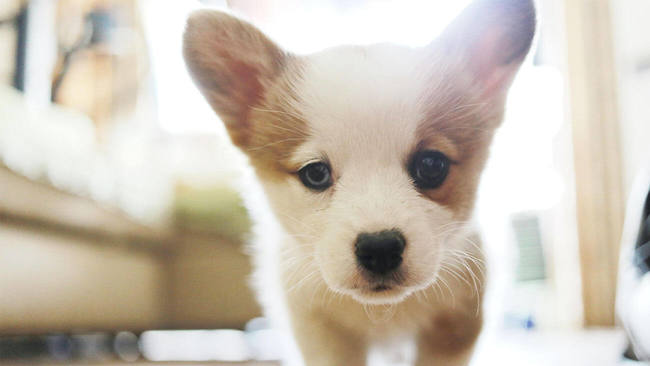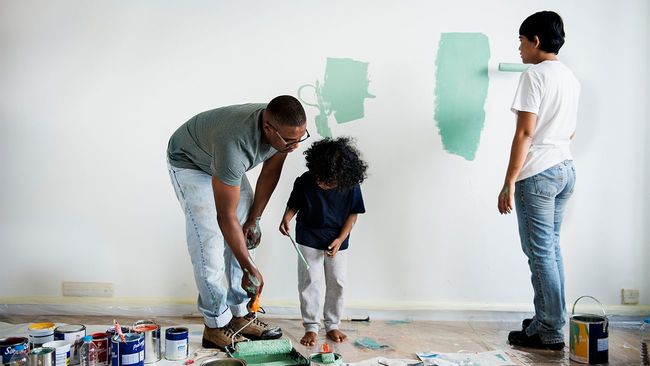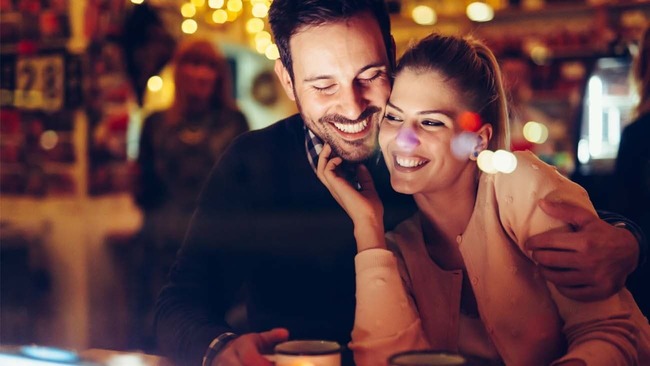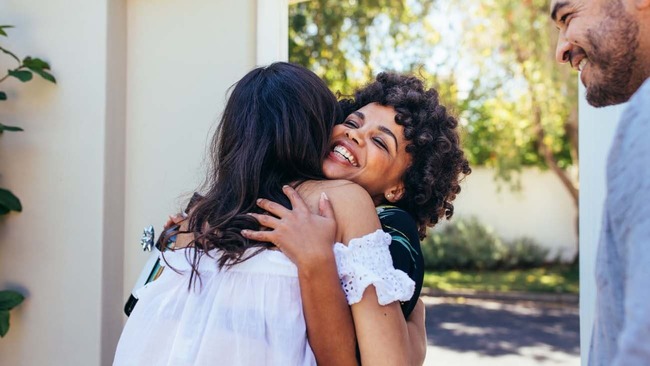How to Puppy-Proof Your Home

There are few happier days in life than the moment you bring home a puppy: the excitement, the wagging tail, the kisses, and snuggles. When you've found the right one, it's an instant love connection — that pup becomes a member of the family, someone you've committed to protecting and keeping healthy.
Puppy-proofing your home is a smart and easy way for most animal lovers to keep your curious best friend safe. With just a few small investments or changes, you're sure to start your new relationship off right.
Indoor pet safety checklist
You will be surprised to learn that there is potential danger all over your home. As a result, it's essential to take the time to walk through each room and envision what could go wrong now that you have a puppy for a roommate.
Nylabone recommends that you go as far as getting on your pup's eye level when starting the puppy-proofing process. Crawling around on all fours, Nylabone says to "look for things that a puppy could chew on or get tangled in, and small spaces he could squeeze through, and eliminate the possibility of an accident."
Here are a few things to do and places to start inside your home.
Puppy-proof your living areas and bedrooms
-
Your new little friend is going to want to chew on cords. Be sure to wrap exposed wires and use outlet protectors to keep your pup safe from electrical shocks.
-
Puppy-proof fences are also important to buy when getting a puppy. Use baby gates to block off staircases until your pet is comfortable climbing up and down safely.
-
Boxwoods, lilies, and hydrangeas are a few plants and flowers that are very dangerous to dogs. If you have some inside, be sure to keep them high enough from the ground that your puppy can't access them.
-
According to Preventive Vet, unintentional poisoning is one of the most common pet emergencies, so be sure to store your purse, gym bag, and backpacks out of reach of your puppy.
Keep a clean kitchen
-
Never leave food unattended. "People food" is not always good for your furry friend's tummy, especially: baked goods, avocado, grapes, pretzels, raw meat, and dairy products.
-
Use a garbage can that requires you to push a button to open or store it behind closed doors (under a cabinet or in a closet). This way, your dog can't knock it over and get into your unwanted leftovers.
-
Keep the floor well swept, ensuring dirt, dust, and leftover food particles are not lingering around.
Watch out for these bathroom concerns
-
Just as you protect your children from prescription medicine, you also need to protect your animals. Be sure medication is securely stored away in cabinets that are out of reach.
-
Cleaning supplies, in general, are mixed with a lot of chemicals. Think of how much bleach is in your toilet bowl or shower cleaner. You certainly do not want these bottles stored away in a cabinet that's low to the ground. They can be easy for your dog to access, spill, and consume.
-
No, the toilet bowl should never be considered another water dish. Ever. Be sure everyone in your household keeps the toilet seat down. If your pet drinks toilet water, it could be consuming unwanted toxic chemicals — or worse, it could be at risk of contracting E. coli.
How to puppy-proof your furniture
The Canine Journal brings up a great point when discussing furniture and pets: "When you get a dog, you have to decide if they will be allowed on the furniture." Setting furniture boundaries may not seem like such a big deal, but before you bring home your new puppy, you need to have already decided whether or not you will allow your pet onto your household furniture. You don't want to let your pup get used to enjoying your furniture only to change your mind and cause your pet confusion.
Set early boundaries with your puppy so that they do not become confused with a sudden reversal or rejection. If you decide to let your puppy share your furniture, here are some tips to increase the lifespan and condition of your household pieces:
- Get yourself a handy couch cover to protect the surface of your couch from stains, drool, or pet hair and dander. Even better, get two covers so that while you are washing one, you can use the other, so the couch remains protected at all times.
-
If you are adding carpet to your home after bringing home your puppy, it is best to choose a color or print close to your pet's color so that hair is less noticeable. Also, there are options for pet-proof, stain-resistant carpeting, like Pet Perfect, for pet owners. If you introduce your puppy to your home with existing carpeting, maybe consider getting area rugs meant for outdoor use for added durability. Or, be ready to rent a steam cleaner regularly to conduct deep cleaning on your carpeting.
-
Most new dog owners don't have the luxury of purchasing new furniture or carpeting upon bringing the puppy home. With this in mind, if you have wooden furniture that you are afraid might fall prey to puppy chews and gnawing, here are some ways to avoid destructive behaviors and protect your furniture:
-
First, don't leave your puppy home alone without a crate or designated space, or you will almost certainly come home to damage somewhere. A crate is a great tool to use as your puppy's safe space, especially when you are out of the house. Crate training is a vital first step to ensure your puppy doesn't see the crate as a punishment or an unpleasant place to hang out.
-
Try picking up some spray from your pet supply store, like Pawsafe Anti Chew Spray, and applying it to any exposed areas of your furniture you don't want your puppy to put his little teeth on.
-
Take the time to set boundaries with your puppy regarding furniture, what rooms he has access to, and set aside plenty of time for training. You are the one who holds the keys to training your puppy on how to behave, so don't just assume he will pick up good habits all by himself. Reward your puppy for listening to your commands and have treats on hand so you can start creating positive reinforcement along with good behavior.
-
Outdoor pet safety checklist
From playing fetch to sunbathing and even rolling around in the snow, your new pet is going to love spending time outdoors. So, it's essential to puppy-proof your yard and be mindful of potential concerns you may encounter on your property or in your neighborhood.
Puppy-proof your yard
-
If you happen to spend time in the front yard, always be sure your pet is on a leash. Traffic can be found in even the quietest of streets. You don't want to risk your puppy running into the road while making a sudden dart after a rabbit.
-
Fenced-in backyards are incredibly helpful when you bring home a puppy. If your property has a lot of outdoor open space, you may want to invest in a puppy-proof fence — assuming you own a home and don't rent. These options will make it easy to keep your puppy within boundaries, whether it's a wood, chain, or invisible fence. You don't want to have to go searching for your pet if it ran off too far, nor do you want another critter approaching it.
-
As we talked about earlier, be aware of the kinds of plants you have growing outdoors, and take necessary measures to keep your puppy safe. Maybe it's relocating the hazardous plant or removing it altogether. Whatever you do, be sure it's out of reach from your pup.
-
When using pesticides on your lawn, the American Kennel Club recommends that you "Keep your dog away from the yard if it has recently been treated with fertilizers, pesticides, or insecticides. Try to avoid using insecticides because the chemicals can be very harmful to your puppy."
Keep your garage organized
-
Store your antifreeze, any paint cans, or other dangerous items up high in the rafters when possible. Leaks and spills are common ways for your pet to be exposed to hazardous chemicals.
-
Pets are more sensitive to carbon monoxide than people are. If you ever needed another reason never to idle your car in the garage, this is it.
-
Lastly, you need to consider the temperature. Your dog can quickly and seriously overheat if it sits in the garage for too long, especially during summer. Heat exhaustion can happen much faster inside of a garage than it would outside on the porch.
Understand your neighborhood
-
Dogs will sniff, lick, and bark (among other things) when being introduced to new animals and people. Just as you get to know your neighbors, you should also get to know their fur babies and learn more about dog breeds and their temperaments.
-
When walking through parks, be mindful of any garbage lying around, especially sharp items or half-eaten food.
-
If you approach another dog's poop, ensure your pet does not ingest it. Eating random feces is a serious health hazard that may result in parasites.
What to buy when getting a puppy
After you've found the perfect colored collar, that cute little food dish that's the perfect height off the floor, and the most cushioned dog bed, it's time to think about what items you'll need. Think flea and tick medication, a healthy brand of dog food, maybe even a puppy gate or crate to keep the little guy or gal contained for some of the day. You'll need toys, treats, a harness, or a leash for walking. Then there's shampoo, cleaning supplies, and possibly puppy pads for potty training.
Believe us; you'll want to have everything necessary on hand before bringing your new loved one home. It's going to be pretty tough to leave your dog behind once it comes home.
Preparing for accidents and emergencies
No, we're not talking about carpet stains or ruined shoes. We're talking about an upset tummy or injury because accidents happen no matter how great a job you do on puppy-proofing your home. That's why a 24-hour emergency vet should be near the top of your puppy-proofing list. While some things can wait until your normal vet opens, there will be instances when you need to seek care immediately.
Having a dog-proof house will make your new furry family member feel right at home. It will make for a safe environment that's fun to explore. And best of all, you won't have to worry about much. Well, at least not as much. Though cute, puppies are (as we said) curious. So chances are puppy-proofing your home will not be a one-and-done ordeal. But at least you have a template for success, so you're ready to make new changes when they're needed.
Photo by Kate Gu on Unsplash




